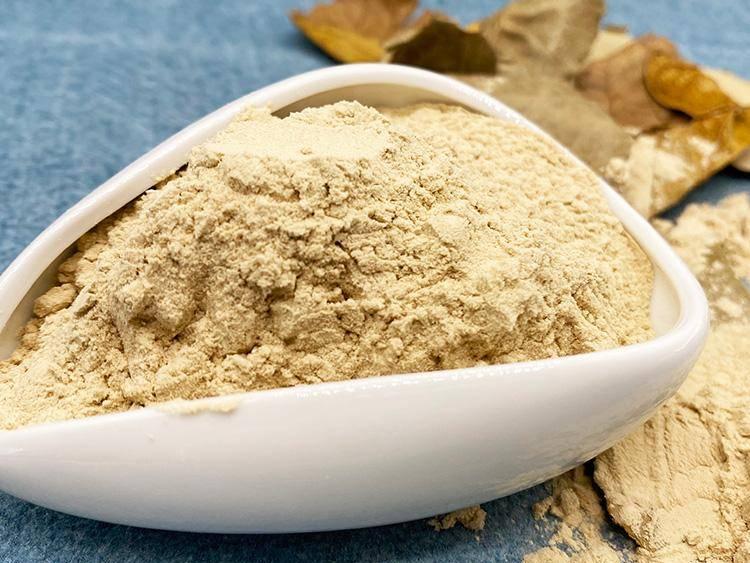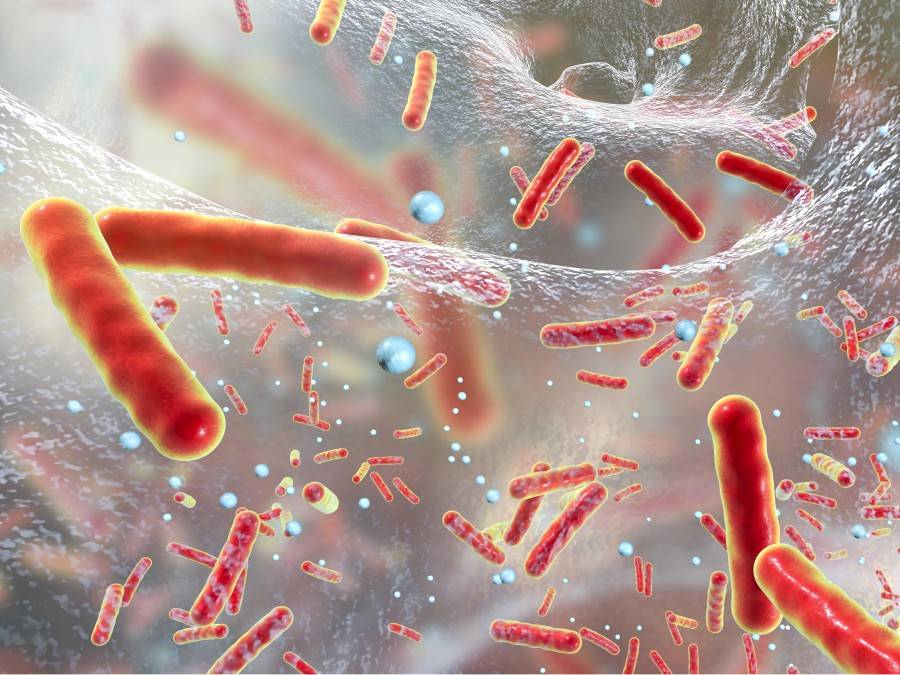What Is the Uses of Beta Glucan Powder in Animal Feeding?
Beta-glucan is a natural polysaccharide and a “generally recognized as safe” (GRAS) product that has received widespread attention and application in the fields of food and health products [1-2]. Beta-glucan is found in microorganisms and plants, and its structure is stable and highly biologically active. Beta-glucan has various biological functions such as antioxidant, immunomodulatory, antitumor, hypoglycemic, repairing intestinal barrier and regulating intestinal microecology [3-4], and can enhance the activity of intracellular antioxidant enzymes [such as superoxide dismutase (SOD), glutathione peroxidase (GSH-Px) and catalase (GSH-Px)], and reduce the levels of oxygen free radicals and oxidative stress products [such as reactive oxygen species (ROS) and malondialdehyde (MDA)] [5].
In a mouse model of neuroinflammation, beta-glucan effectively blocked the overactivation of pro-inflammatory cells, inhibited the upregulation of pro-inflammatory cytokines, and protected the brain from inflammatory damage [6]. In addition, beta-glucan promoted the proliferation of macrophages in the mouse peritoneal cavity, triggered an immune response, and inhibited the growth and metastasis of melanoma cells [7]. In a mouse model of obesity induced by a high-fat, low-fiber diet, β-glucan restored intestinal barrier function and corrected the imbalance of the microbiota caused by an unhealthy diet [8]. In animal farming, β-glucan can be used as an alternative to antibiotics and is expected to improve animal growth performance [9]. This article reviews the biological functions of β-glucan and its application in animal production, providing a reference for its development as a feed additive.
1 Properties of β-glucan
Beta-glucan is a polysaccharide composed of D-glucose monomers linked by beta-glycosidic bonds. It is widely distributed in yeast, fungi, certain bacteria, algae, and grains (oats and barley). It is mainly in a linear structure and composed of D-glucose units linked by either an isolated beta-(1,3) bond or a group of beta-(1,4) bonds.
Beta-glucans differ in terms of side chain branching, solubility, viscosity, gelation properties, glycosidic bond connections and molecular weight [10]. For example, shiitake mushroom β-glucan (trisaccharide, β-1, 6-branched chain, β-1, 3-glucan, 400–800 kDa), cereal β-glucan (mixed-linked β-1, 3 and β-1, 4 glucan, 130–410 kDa), β-glucan from Schizophyllum (reversible curl or randomly coiled , β-1, 6-branched , β-1, 3-glucan , 100~10 000 kDa), yeast β-glucan (main chain is β-1, 3-glucan , branched chain is β-1, 6-glucan , triple super-micro spiral structure, 20~4 000 kDa) [10 -11]. β-Glucan with a linear structure with β-1, 3-D-glucose units as the core is the most common form. β-Glucan exists in both soluble and insoluble forms. Commercially available β-glucan is mostly derived from yeast and is usually an insoluble crystalline powder that is white or light yellow in color. Its molecular formula is [C6H10O5]n.
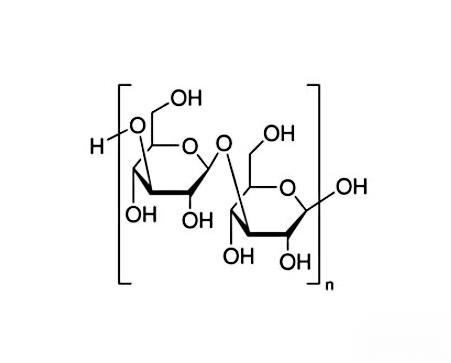
2 Biological functions of β-glucan
2.1 Antioxidant
Animal farming faces oxidative stress from the environment, diet, transportation, disease, and breeding, among other factors, which threatens the health and productivity of the body. Oxidative stress leads to the production of ROS, which causes oxidative damage [12-13]. Studies have found that β-glucan effectively reduces oxidative stress in RAW264.7 cells induced by lipopolysaccharide (LPS) in an oxidative stress model in mice by activating the C-type lectin domain-containing 7A (Dectin-1)/nuclear factor E2-related factor 2 (Nrf2)/heme oxygenase-1 (HO-1) signaling pathway, and enhances the activity of antioxidant enzymes and the production of ROS and MDA [14]. Similarly, β-glucan significantly increased the activities of SOD, CAT and GSH-Px, and reduced ROS and MDA levels in sheep lymphocytes induced by LPS, effectively inhibiting oxidative damage to lymphocytes [15]. In addition, in Caenorhabditis elegans, β-glucan significantly reduces ROS levels, enhances the activity of antioxidant enzymes (SOD, CAT), and prolongs life span by regulating the insulin-like receptor β subunit (daf-2)/forkhead-containing domain protein (daf-16) pathway, exhibiting strong antioxidant capacity [16].
2.2 Immune regulation
β-glucan can bind to specific receptors on the cell wall, such as integrin αM (CR3) and Dectin-1, activate macrophages, enhance antibody secretion and natural killer cell activity [17]. WANG et al. [18] found that β-glucan has anti-inflammatory activity against LPS-induced cells by inhibiting NF-κB and activating the JNK/MAPK signaling pathway, significantly reduced the production of nitric oxide (NO) and tumor necrosis factor-α (TNF-α), and had anti-inflammatory activity against LPS-induced cells. In addition, β-glucan is an effective immune inducer that enhances the host's response to secondary infection through the “training immunity” mechanism. In the case of Mycobacterium tuberculosis (Mtb) infection, β-glucan training immunity enhances the secondary immune response, promote the production of anti-inflammatory factors and inhibit the growth of Mtb [19]. Similarly, β-glucan can continuously enhance antimicrobial capacity by training macrophages, strengthening phagocytosis, inflammation and chemokine production [20]. Therefore, β-glucan can stimulate the immune system, regulate cytokines, and enhance antimicrobial and anti-inflammatory capacity.
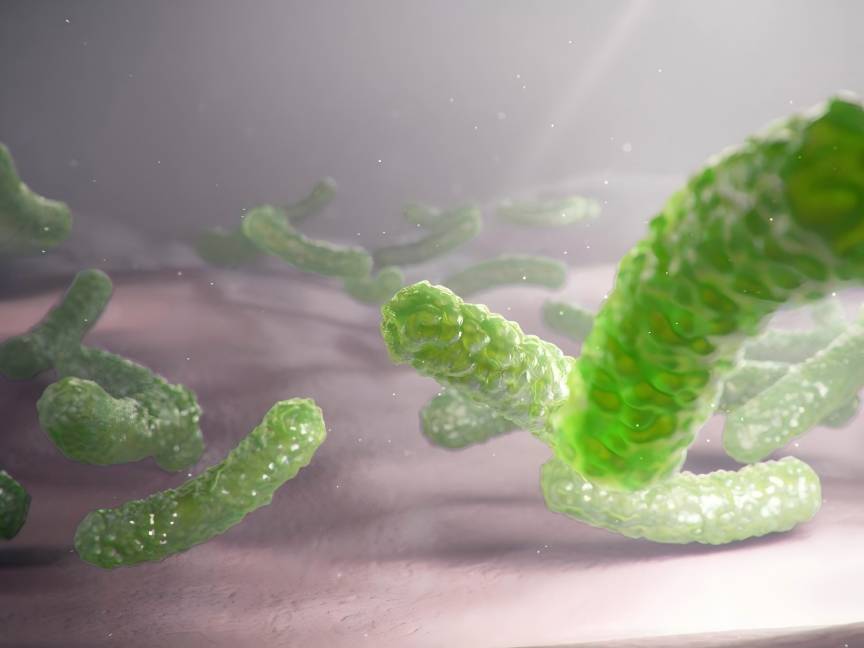
2.3 Antitumor
β-glucan has been shown to inhibit breast, pancreatic, and colorectal cancers. Its antitumor effect involves regulating protein kinase B (AKT)/mammalian target of rapamycin (mTOR), p38/MAPK, and other signaling pathways, inducing autophagy and apoptosis [3,21]. β-Glucan has multiple effects in cancer prevention and treatment. In breast cancer, beta-glucan reduces the infiltration of inflammatory cells and induces apoptosis in tumor cells by inhibiting the AKT/mTOR signaling pathway [21]. Beta-glucan has a cytotoxic effect on ovarian cancer cells, inhibits cancer cell proliferation by activating p38/MAPK activity, and promotes apoptosis [22]. Studies have also found that β-glucan inhibits the growth and metastasis of breast cancer through the nuclear receptor subfamily 4A group member 1 (Nur77)/hypoxia-inducible factor-1α (HIF-1α) signaling axis [23]. β-Glucan can deliver antitumor and gene therapy drugs, target tumors for precise delivery, and play a synergistic role in reducing side effects [24].
2.4 Repairing the intestinal barrier and regulating the intestinal microecology
The intestinal barrier can maintain the balance between the internal and external environments of the intestines and protect the body from harmful substances. A dose of 500 mg/kg of β-glucan had no effect on the growth of piglets attacked by the enterotoxin Escherichia coli, but it reduced intestinal epithelial damage, increased intestinal villus height and expression of tight junction proteins, strengthened intestinal immunity and antioxidant capacity, and increased the abundance of intestinal lactobacilli, thereby reducing intestinal damage [25-26]. In a model of ulcerative colitis, β-glucan reduced disease activity indices, pathological damage and myeloperoxidase (MPO) concentrations in the colon, and improved the intestinal barrier and microbial composition [27-28]. Therefore, β-glucan has certain benefits in terms of intestinal barrier repair and microecological regulation.
2.5 Other functions
In addition to the above functions, β-glucan also has the functions of lowering blood lipids, blood sugar and anti-inflammation. In a mouse model of obesity induced by a high-fat diet, β-glucan can reduce body weight, improve blood lipids, inhibit liver lipid accumulation, and promote lipid decomposition, showing potential anti-obesity effects [29]. β-Glucan prevents obesity caused by a high-fat diet by improving body weight, blood lipids, inflammation, glucose metabolism, and intestinal microecological imbalance [30]. In addition, β-glucan also has a hypoglycemic effect. β-glucan is fermented in the intestine to produce short-chain fatty acids (SCFAs), which stimulate the secretion of glucagon-like peptide-1 (GLP-1), regulate blood sugar, and improve insulin sensitivity [31]. Finally, β-glucan also plays an important role in anti-inflammation. β-glucan can reduce intestinal inflammation in inflammatory bowel disease models, increase immunoglobulin levels, reduce the expression of pro-inflammatory cytokines, and reduce colon damage [32]. In summary, β-glucan ensures health by regulating glycolipid metabolism, regulating the microecology, and inhibiting inflammation.
3 Application of β-glucan in animal feeding
3.1 Application of β-glucan in pig feeding
Studies have found that adding β-glucan to the feed increases the weight and feed intake of fattening pigs by 7.6% and 5.3% respectively, and the optimal dosage is 50 mg/kg [33]. Weaned piglets fed 200 mg/kg β-glucan showed better growth performance, with body weight and duodenal villus height and crypt depth ratios from 1 to 21 days being 17.58% and 12.81% higher than those of the control group [34]. In addition, β-glucan helps increase the number of beneficial microorganisms. High concentrations of β-glucan can reduce the absorption of nutrients, but stimulate the production of butyrate in the cecum and reduce the ammonia content in the feces [35]. LUO et al. [36] found that the addition of 100 mg/kg of β-glucan can improve the growth performance and intestinal morphology of weaned piglets by promoting the increase in the height of the ileal villi and the decrease in the crypt depth, stimulating the upregulation of intestinal mucin gene (MUC1 and MUC2) and increased the number of Lactobacillus in the cecum and reduced the number of Escherichia coli.
In addition, feeding β-glucan promotes an increase in the number of beneficial bacteria in the pig intestine (such as Bacillus, Lactobacillus, and Bifidobacterium), while reducing Salmonella colonization in the cecum [37]. LI et al. [38] found that in the LPS model, β-glucan (50 mg/kg) can promote the production of anti-inflammatory factors such as interleukin-6 (IL-6), TNF and interleukin-10 (IL-10) to cope with the inflammatory response. HERMANS et al. [39] showed that β-glucan can activate porcine monocytes to produce TNF-α, IL-6 and IL-10, among which the increase in IL-10 triggers an increase in NK cell cytotoxicity. In addition, TRAN et al. [40] found that β-glucan had a protective effect on porcine alveolar macrophages infected with African swine fever virus (ASFV) under in vitro conditions, and this protective effect persisted for 24 h after infection. High doses of β-glucan pretreatment increased the expression of interferon-α (IFN-α) and IL-6, thereby protecting the host from ASFV infection . Beta-glucan also alleviates rotavirus infection in piglets, as well as lung lesions and viral replication rates caused by swine influenza virus infection [41-42]. In summary, beta-glucan has a positive regulatory effect on pig growth, intestinal health and immune response, reducing the risk of viral infection.
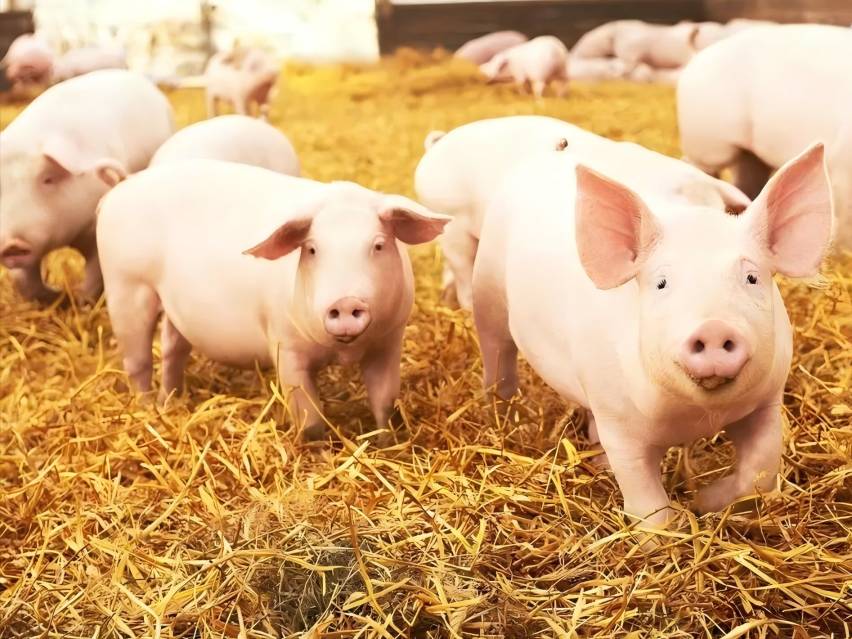
3.2 Application of beta-glucan in poultry feeding
Studies have shown that adding 1% β-glucan to the feed can increase the body weight of broilers at 14, 30 and 42 days by 10.67%, 10.00% and 10.73% respectively. In addition, the antibody titer against infectious bursal virus increased by 2.23%, 42.85% and 1 3.63% [43]. Qu Kunpeng et al. [44] found that the addition of 150 g/t β-glucan significantly increased the body weight of 21-day-old broilers by 3.53%. At the same time, the serum immunoglobulin content increased, the number of lactobacilli in the cecum increased, and the number of Salmonella in the intestine decreased. WANG et al. [45] confirmed that β-glucan significantly improved the intestinal microbial composition, increasing beneficial bacteria such as the Bacteroidetes phylum and the Firmicutes phylum. ZHEN et al. [46] showed that the addition of 200 mg/kg β-glucan helped to promote the relative abundance of Lactobacillus, Bacillus and Enterobacter in the intestine, thereby improving the balance of the intestinal microbial flora.
In addition, CAO et al. [47] found that the immunomodulatory effect of β-glucan may be mediated through the MAPK signaling pathway, upregulating the expression of immune response-related genes (such as TGF-β, IL-6, and TLR5), G-protein-coupled receptors, and mRNA related to peptides of the histocompatibility complex (MHCI-like), and reducing the mRNA expression related to antimicrobial peptides and β- mRNA expression.
In an immunosuppression model, the addition of 4 mg/kg of β-glucan significantly increased the bursa index and the concentration of immune regulatory factors (IFN-γ, IL-6), reduced the concentration of transforming growth factor β1 (TGF-β1), and promoted lymphocyte proliferation. Compared with the control group, it effectively reduced the histopathological changes of the chicken bursa and improved the population of Bifidobacterium and Lactobacillus in the chicken cecum digestive tract[48]. population in the chicken cecum digestive tract [48]. β-glucan can also relieve symptoms such as necrotic enteritis, heat stress, and Salmonella and Escherichia coli infections in poultry, and can also be used as an immune adjuvant for infectious bronchitis virus, Newcastle disease virus, and influenza virus [47,49-52]. Therefore, β-glucan has a significant effect in regulating the immune system of poultry, alleviating immunosuppression, enhancing vaccine efficacy, improving body resistance, and improving growth performance and health.
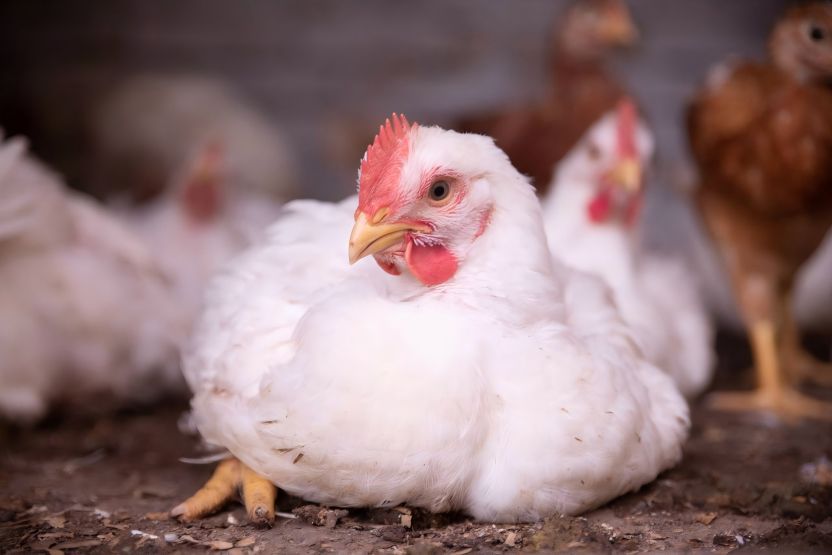
3.3 Application of β-glucan in ruminant feeding
Studies have shown that adding 10 g/(head·d) β-glucan to the periparturient dairy cow ration can significantly increase postpartum dry matter intake, milk production and milk protein production, increasing them by 9.66%, 5.50% and 8.49%, respectively [53]. From late pregnancy to early lactation, β-glucan supplementation (10 g/d) in dairy cows can increase milk production, improve milk quality and negative energy balance-induced fat metabolism disorders, reduce inflammatory responses, and at the same time improve immunity and antioxidant capacity [54].
In addition, LUO et al. [55] showed that after calves were supplemented with β-glucan, their weaning weight increased by 4.29 kg compared to the control group, and it promoted the increase of serum globulin, albumin and antioxidant enzymes, increased the richness of intestinal microorganisms, and reduced the ratio of Firmicutes to Bacteroidetes, which helped promote the growth and health of calves before weaning. JIN et al. [56] showed that β-glucan induces the expression of a defense peptide (SBD-1) in sheep rumen epithelial cells through the TLR2-myeloid differentiation factor 88 (MyD88)-NF-κB/MAPK signaling pathway, enhancing innate immunity, with the NF-κB pathway possibly being the main regulatory signal. PEDRO et al. [57 found that bovine monocytes respond to the Dectin-1 receptor to beta-glucan particles, enhancing immune stimulation and increasing the expression of pro-inflammatory cytokines (IL-8, IL-1β and IL-6).
After oral administration of β-glucan (50 mg/kg), newborn goats showed an enhanced immune response after LPS challenge, including respiratory burst, cytokine (IL-1β, TNF-α and IL-6) production and transcription of macrophage surface markers (CD11b and F4/80), indicating that oral β-glucan can induce trained immunity in newborn goats [58]. . In addition, β-glucan can promote the gene and protein expression of cellular immune molecules SBD-1, IL-6 and IL-10 in sheep rumen explants, enhance immune activity, and promote mucosal immunity[59] . In summary, β-glucan has the benefits of promoting growth, enhancing immunity, and adjusting the balance of intestinal microorganisms in ruminants.
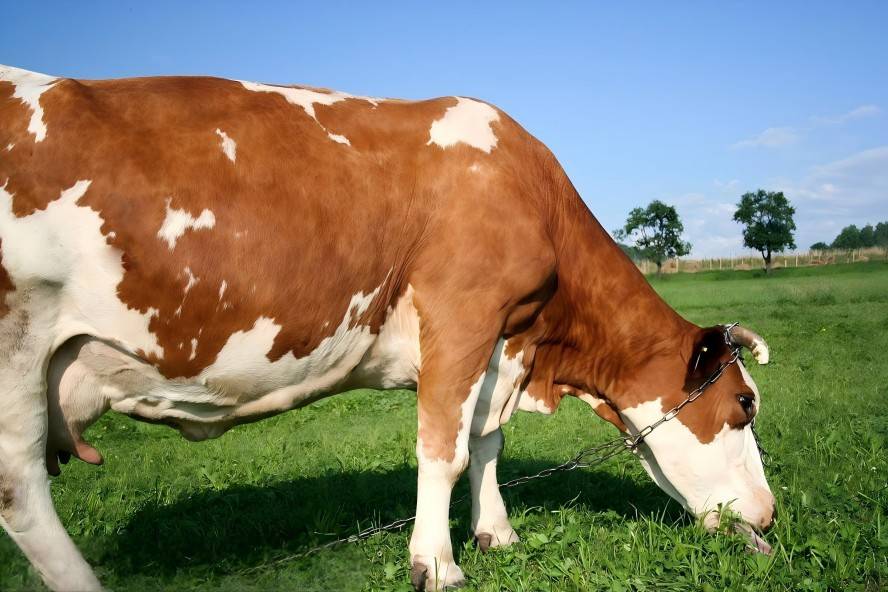
3.4 Application of β-glucan in aquaculture
Studies have found that adding different levels of β-glucan to feed can significantly increase the daily weight gain and survival rate of golden pomfret, promote the increase of white blood cells, lymphocytes and monocytes, reduce the number of intestinal vibrio, and improve the salt tolerance of fish. The optimal addition amount is 1 g/kg [60]. After zebrafish were infected with Cyprinid Herpesvirus (SVCV), the expression of pro-inflammatory cytokines (IL-1β, IL-6, IL-8, IL-10 and TNF-α) was up-regulated after β-glucan stimulation, which enhanced the response to SVCV infection and increased the survival rate of infected fish by 40% [61]. increased by 40% [61]. LIANG et al. [62] found that the addition of 0.025% β-glucan to zebrafish feed can enhance resistance to SVCV by inhibiting SVCV replication in cells and inducing an autophagy response to further enhance the antiviral effect. This effect may be achieved by activating the type I interferon (IFN) signaling pathway, including an increase in the expression of other genes involved in the IFN signaling pathway (MxB, Mx C, TLR7, RIG1, MAVS, IRF3 and IRF7).
Beta-glucan also alters the intestinal microbiota, reducing the abundance of Proteobacteria and enriching Bacteroidetes and Firmicutes. A study by Dos Santos Voloski et al. [63] showed that treating injured silver catfish with 0.5% beta-glucan can promote increased deposition of granulation tissue around the wound, reduce the degree of inflammation, accelerate the deposition of collagen fibers and dermal repair, and thus effectively promote the wound healing of silver catfish. In addition, KOCH et al. [64] found that β-glucan can effectively enhance the natural immunity and disease resistance of tilapia during the administration period of 15 to 45 days. A longer administration period will not lead to immunosuppression, but rather promote growth and immune performance.
MU et al. [65] established a trained immune activation model in teleosts and confirmed that β-glucan can prevent bacterial infection. Single cell RNA sequencing further demonstrated that the IL-1R signaling pathway plays an important role in bacterial clearance during trained immunity in bony fish. In addition, β-glucan can also treat rainbow trout enteritis caused by Yersinia ruckeri and resist infection by nervous necrosis virus [66-67]. In summary, β-glucan has multiple positive effects in aquaculture, including enhancing immunity, resisting viruses, and promoting intestinal health.
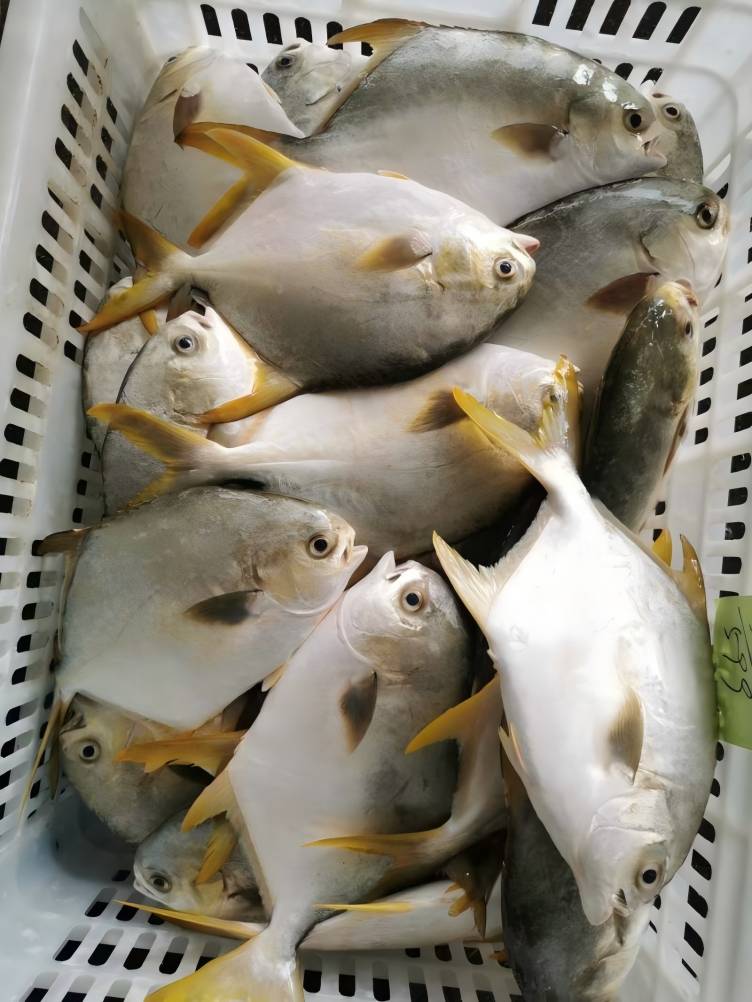
4 Outlook
β-Glucan is a good and safe green feed additive. The application of β-glucan powder in animal farming can improve animal health, reduce the damage of oxidative stress to animals, and thus improve production performance. However, different animal species and growth stages may respond differently to β-glucan, so the scope of application and the optimal conditions for use need to be explored in depth. In addition, the production process and extraction methods need to be improved to ensure the purity and stability of β-glucan. At the same time, the synergistic effect of β-glucan with different feed ingredients needs to be further studied in order to achieve better results.
Reference:
[1] LOVING C L, BEARSON S M D, BEARSON B L, et al. Effect of dietary β-glucan on intestinal microbial diversity and Salmonela vaccine immunogenicity and efficacy in pigs[J]. Vet Microbiol, 2023, 278: 109648.
[2] AOE S. Beta-glucan in foods and health benefits[J]. Nutrients, 2021, 14(1): 96.
[3] HAN X, LUO R, YE N, et al. Research progress on natural β-glucan in intestinal diseases[J]. IntJ Biol Macromol, 2022, 219: 1244-1260.
[4] ZHANG Q, ZHAO W, HOU Y, et al. β -glucan attenuates cognitive impairment of APP/PS1 mice via regulating intestinal flora and its metabolites[J]. CNS Neurosci Ther, 2023, 29(6): 1690-1704.
[5] AKARAS N, ABUC O O, KOC K, et al. (1→3)-β-D-glucan enhances the toxicity induced by Bortezomib in rat testis[J]. J Food Biochem, 2020, 44(3): e13155.
[6] CUI Z, GONG Y, LUO X, et al. β -glucan alleviates goal-directed behavioral deficits in mice infected with Toxoplasma gondi[J]. Parasit Vectors, 2023, 16(1): 65.
[7] BYUN E B, PARK S H, JANG B S, et al. Gamma-irradiated β-glucan induces immunomodulation and anticancer activity through MAPK and NF-κB pathways[J]. J Sci Food Agric, 2016, 96(2): 695-702.
[8] SHI H, YU Y, LIN D, et al. β -glucan attenuates cognitive impairment via the gut-brain axis in diet-induced obese mice[J]. Microbiome, 2020, 8(1): 143.
[9] SCHWARTZ B, VETVICKA V. Review: β -glucans as effective antibiotic alternatives in poultry[J]. Molecules, 2021, 26(12): 3560.
[10] DU B, MEENU M, LIU H, et al. A concise review on the molecular structure and function relationship of β -glucan[J]. IntJ Mol Sci, 2019, 20(16): 4032.
[11] WANI S M, GANI A, MIR S A, et al. β -glucan: A dual regulator of apoptosis and cell proliferation[J]. Int J Biol Macromol, 2021, 182: 1229-1237.
[12] ZHAO R H, YANG F X, BAI Y C, et al. Research progress on the mechanisms underlying poultry immune regulation by plant polysaccharides[J]. Front Vet Sci, 2023, 10: 1175848.
[13] Lauridsen C. From oxidative stress to inflammation: Redox balance and immune system[J]. Poult Sci, 2019, 98(10): 4240-4246.
[14] YU C, CHEN H, DU D, et al. β -Glucan from saccharomyces cerevisiae alleviates oxidative stress in LPS-stimulated RAW264.7 cells via Dectin-1/Nrf2/HO-1 signaling pathway[J]. Cell Stress Chaperones, 2021, 26(4): 629-637.
[15] Yu Chunwei, Li Dongfang, Liu Shixiong, et al. Protective effect of yeast β-glucan on oxidative stress damage induced by lipopolysaccharide in sheep lymphocytes [J]. Journal of Animal Nutrition, 2020, 32(6): 2904-2910.
[16] XIAO X, ZHOU Y, TAN C, et al. Barley β -glucan resist oxidative stress of Caenorhabditis elegans via daf-2/daf-16 pathway[J]. IntJ Biol Macromol, 2021, 193(Pt B): 1021-1031.
[17] DE MARCO C E, CALDER P C, ROCHE H M. β-1,3/1,6-glucans and immunity: State of the art and future directions[J]. Mol Nutr Food Res, 2021, 65(1): e1901071.
[18] WANG J, YUAN Y, YUE T. Immunostimulatory activities of β -D- glucan from Ganodermalucidum[J]. Carbohydr Polym, 2014, 102: 47-54.
[19] MOORLAG S, KHAN N, NOVAKOVIC B, et al. β -glucan induces protective trained immunity against mycobacterium tuberculosis infection: A key role for IL-1[J]. Cell Rep, 2020, 31(7): 107634.
[20] STOTHERS C L, BURELBACH K R, OWEN A M, et al. β-glucan induces distinct and protective innate immune memory in differentiated macrophages[J]. J Immunol, 2021, 207(11): 2785-2798.
[21] ZHU F, ZHANG Q, FENG J, et al. β -glucan produced by Lentinus edodes suppresses breast cancer progression via the inhibition of macrophage M2 polarization by integrating autophagy and inflammatory signals[J]. ImmunInflamm Dis, 2023, 11(5): e876.
[22] KOBAYASHI H, YOSHIDA R, KANADA Y, et al. Suppressing effects of daily oral supplementation of beta-glucan extracted from Agaricus blazei Murill on spontaneous and peritoneal disseminated metastasis in mouse model[J]. J Cancer Res Clin Oncol, 2005, 131(8): 527-538.
[23] ZHANG X, LI T, LIU S, et al. β-glucan from Lentinusedodesinhibits breast cancer progression via the Nur77/HIF-1α axis[J]. Biosci Rep, 2020, 40(12): BSR20201006.
[24] SU Y, CHEN L, YANG F, et al. Beta-D-glucan-based drug delivery system and its potential application in targeting tumor associated macrophages[J]. Carbohydr Polym, 2021, 253: 117258.
[25] ZHOU Y, LUO Y, YU B, et al. Agrobacterium sp. ZX09 β -glucan attenuates enterotoxigenic Escherichia coli-induced disruption of intestinal epithelium in weaned pigs[J]. Int J Mol Sci, 2022, 23(18): 10290.
[26] ZHOU Y, LUO Y, YU B, et al. Effect of β-glucan supplementation on growth performance and intestinal epithelium functions in weaned pigs challenged by enterotoxigenic Escherichia coli[J]. Antibiotics (Basel), 2022, 11(4): 519.
[27] LIU N, ZOU S, XIE C, et al. Effect of the β -glucan from Lentinus edodes on colitis-associated colorectal cancer and gut microbiota[J]. Carbohydr Polym, 2023, 316: 121069.
[28] CHEN M, TIAN S, LI S, et al. β-glucan extracted from highland barley alleviates dextran sulfate sodium-induced ulcerative colitis in C57BL/6J mice[J]. Molecules, 2021, 26(19): 5812.
[29] YU S, WANG J, LI Y, et al. Structural studies of water-insoluble β-glucan from oat bran and its effect on improving lipid metabolism in mice fed high-fat diet[J]. Nutrients, 2021, 13(9): 3254.
[30] MO X, SUN Y, LIANG X, et al. Insoluble yeast β -glucan attenuates high-fat diet-induced obesity by regulating gut microbiota and its metabolites[J]. Carbohydr Polym, 2022, 281: 119046.
[31] MIO K, TOGO-OHNO M, TADENUMA N, et al. A single administration of barley β -glucan and arabinoxylan extracts reduces blood glucose levels at the second meal via intestinal fermentation[J]. Biosci Biotechnol Biochem, 2022, 87(1): 99-107.
[32] YE M B, BAK J P, AN C S, et al. Dietary β-glucan regulates the levels of inflammatory factors, inflammatory cytokines, and immunoglobulins in interleukin-10 knockout mice[J]. J Med Food, 2011, 14(5): 468-474.
[33] CHOI H, KIM S W. Characterization of β -glucans from cereal and microbial sources and their roles in feeds for intestinal health and growth of nursery pigs[J]. Animals (Basel), 2023, 13(13): 2236.
[34] WU Y, LI X, LIU H, et al. A water-soluble β-glucan improves growth performance by altering gut microbiome and health in weaned pigs[J]. Anim Nutr, 2021, 7(4): 1345-1351.
[35] METZLER-ZEBELI B U, ZEBELI Q. Cereal β-glucan alters nutrient digestibility and microbial activity in the intestinal tract of pigs, and lower manure ammonia emission: A meta-analysis[J]. J Anim Sci, 2013, 91(7): 3188-3199.
[36] LUO J, LIU S, YU B, et al. Beta-glucan from Agrobacteriumsp. ZX09 improves growth performance and intestinal function in weaned piglets [J]. J Anim Physiol Anim Nutr (Berl), 2019, 103(6): 1818-1827.
[37] BEARSON S M D, TRACHSEL J M, BEARSON B L, et al. Effects of β-glucan on Salmonela enterica serovar Typhimurium swine colonization and microbiota alterations[J]. Porcine Health Manag, 2023, 9(1): 7.
[38] LI J, LI D F, XING J J, et al. Effects of beta-glucan extracted from Saccharomyces cerevisiae on growth performance, and immunological and somatotropic responses of pigs challenged with Escherichia coli lipopolysaccharide[J]. J Anim Sci, 2006, 84(9): 2374-2381.
[39] HERMANS L, DE PELSMAEKER S, DENAEGHEL S, et al. β -glucan-induced IL-10 secretion by monocytes triggers porcine NK cell cytotoxicity[J]. Front Immunol, 2021, 12: 634402.
[40] TRAN H T T, TRUONG A D, CHU N T, et al. Inhibition of African swine fever virus replication by β -glucan[J]. Open Vet J, 2022, 12(6): 1027-1034.
[41] CHETHAN G E, GARKHAL J, SIRCAR S, et al. Immunomodulatory potential of β -glucan as supportive treatment in porcine rotavirus enteritis[J]. Vet Immunol Immunopathol, 2017, 191: 36-43.
[42] JUNG K, HA Y, HA S K, et al. Antiviral effect of saccharomyces cerevisiae beta-glucan to swine influenza virus by increased production of interferon-gamma and nitric oxide[J]. J Vet Med B Infect Dis Vet Public Health, 2004, 51(2): 72-76.
[43] RAJAPAKSE J R, BUDDHIKA M D, NAGATAKI M, et al. Effect of sophy β -glucan on immunity and growth performance in broiler chicken[J]. J Vet Med Sci, 2010, 72(12): 1629-1632.
[44] Qu Kunpeng, Zhang Qian, Yang Jiachang, et al. Effects of β-glucan on growth performance, immune function and intestinal microenvironment of broiler chickens [J]. Journal of Animal Nutrition, 2016, 28(7): 2235-2242.
[45] WANG J, ZHENG Z, YANG H, et al. Effect of β -1, 3/1, 6-glucan on gut microbiota of yellow-feathered broilers[J]. AMB Express, 2022, 12(1): 115.
[46] ZHEN W, LIU Y, SHAO Y, et al. Yeast β -glucan altered intestinal microbiome and metabolome in older hens[J]. Front Microbiol, 2021, 12: 766878.
[47] CAO L, LIJ, ZHANG J, et al. Beta-glucan enhanced immune response to Newcastle disease vaccine and changed mRNA expression of spleen in chickens[J]. Poult Sci, 2023, 102(2): 102414.
[48] WANG M, WANG X, ZHANG L, et al. Effect of sulfated yeast beta- glucan on cyclophosphamide-induced immunosuppression in chickens [J]. Int Immunopharmacol, 2019, 74: 105690.
[49] HE W, KAMELY M, WAKARUK J, et al. Early-life β -glucan exposure enhances disease resilience of broiler chickens to a natural Clostridium perfringens infection[J]. Dev Comp Immunol, 2023, 140: 104613.
[50] ZHANG S, OU J, LUO Z, et al. Effect of dietary β -1, 3-glucan supplementation and heat stress on growth performance, nutrient digestibility, meat quality, organ weight, ileum microbiota, and immunity in broilers[J]. Poult Sci, 2020, 99(10): 4969-4977.
[51] LARSEN F T, GULDBRANDTSEN B, CHRISTENSEN D, et al. Pustulan activates chicken bone marrow-derived dendritic cells invitro and promotes ex vivo CD4+ T cell recall response to infectious Bronchitis virus[J]. Vaccines (Basel), 2020, 8(2): 226.
[52] SHI S, YIN L, SHEN X, et al. β-glucans from Trametes versicolor (L.) lloyd is effective for prevention of influenza virus infection[J]. Viruses, 2022, 14(2): 237.
[53] Gu Kuntao, Zhao Liansheng, Wang Liuxiang, et al. Effects of yeast β-glucan added to the feed on the production performance, serum biochemical indicators and antioxidant capacity of periparturient dairy cows [J]. Journal of Animal Nutrition, 2018, 30(6): 2164-2171.
[54] XIA W H, WANG L, NIU X D, et al. Supplementation with beta-1, 3-glucan improves productivity, immunity and antioxidative status in transition Holstein cows[J]. Res Vet Sci, 2021, 134: 120-126.
[55] LUO Z, MA L, ZHOU T, et al. Beta-glucan alters gut microbiota and plasma metabolites in pre-weaning dairy calves[J]. Metabolites, 2022, 12(8): 687.
[56] JIN X, ZHANG M, YANG Y F. Saccharomyces cerevisiae β-glucan- induced SBD-1 expression in ovine ruminal epithelial cells is mediated through the TLR-2-MyD88-NF- κB/MAPK pathway[J]. Vet Res Commun, 2019, 43(2): 77-89.
[57] PEDRO A R V, LIMA T, FRÓIS-MARTINS R, et al. Dectin-1- mediated production of pro-inflammatory cytokines induced by yeast β-glucans in bovine monocytes[J]. Front Immunol, 2021, 12: 689879.
[58] ANGULO M, REYES-BECERRIL M, CEPEDA-PALACIOS R, et al. Oral administration of Debaryomyces hanseni CBS8339- β -glucan induces trained immunity in newborn goats[J]. Dev Comp Immunol, 2020, 105: 103597.
[59] ZHANG M, JIN X, YANG Y F, et al. β -glucan from Saccharomyces cerevisiaeis involved in immunostimulation of ovine ruminal explants[J]. Can J Vet Res, 2020, 84(4): 283-293.
[60] DO HUU H, SANG H M, THANH THUY N T. Dietary β -glucan improved growth performance,Vibrio counts, haematological parameters and stress resistance of pompano fish, Trachinotus ovatus Linnaeus, 1758[J]. Fish Shellfish Immunol, 2016, 54: 402-410.
[61] M-GR M, ORTEGA-VILLAIZAN M D M, MERCADO L, et al. Beta-glucan enhances the response to SVCV infection in zebrafish[J]. Dev Comp Immunol, 2018, 84: 307-314.
[62] LIANG H, LI Y, LI M, et al. The effect and underlying mechanism of yeast β -glucan on antiviral resistance of zebrafish against spring viremia of carp virus infection[J]. Front Immunol, 2022, 13: 1031962.
[63] DOS SANTOS VOLOSKI A P, DE FIGUEIREDO S L, DAZZI C C, et al. β -glucan improves wound healing in silver catfish (Rhamdia quelen)[J]. Fish Shellfish Immunol, 2019, 93: 575-579.
[64] KOCH J F A, DE OLIVEIRA C A F, ZANUZZO F S. Dietary β -glucan (MacroGard) improves innate immune responses and disease resistance in Nile tilapia regardless of the administration period[J]. Fish Shellfish Immunol, 2021, 112: 56-63.
[65] MU D, YANG J, JIANG Y, et al. Single-cell transcriptomic analysis reveals neutrophil as orchestrator during β -glucan-induced trained immunity in a Teleost fish[J]. J Immunol, 2022, 209(4): 783-795.
[66] SKOV J, KANIA P W, HOLTEN-ANDERSEN L,et al. Immunomodulatory effects of dietary β -1, 3-glucan from Euglena gracilis in rainbow trout (Oncorhynchus mykis) immersion vaccinated against Yersinia ruckeri[J]. Fish Shellfish Immunol, 2012, 33(1): 111-120.
[67] KRISHNAN R, JANG Y S, OH M J. Beta glucan induced immune priming protects against nervous necrosis virus infection in sevenband grouper[J]. Fish Shellfish Immunol, 2022, 121: 163-171.


 English
English French
French Spanish
Spanish Russian
Russian Korean
Korean Japanese
Japanese